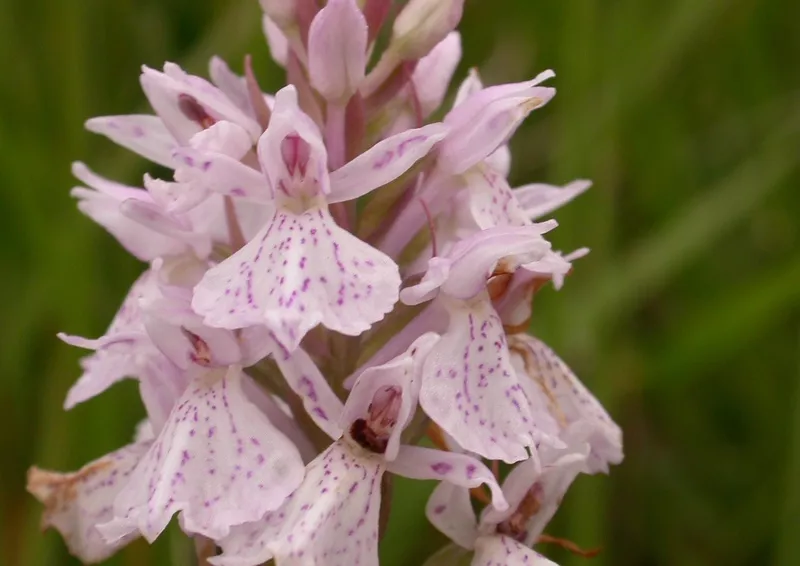
December on Hothfield Heathlands: Mosses and lichens
In our December instalment about Hothfield we focus on mosses and lichens on the reserve. Read on to find out more.


Heath spotted orchid - Photo by Philip Precey
The Southern marsh orchid, Dactylorhiza praetermissa, grows in the lower bog where conditions are slightly less acid. Here it can grow to 50cm, a sturdy plant with the bright purplish-pink boldly marked flowers crowded in a spike on the top fifth of the stem. Like many orchids it can vary in colour intensity and flower markings and shape. It hybridizes easily with the spotted orchids, leading to even more variations. It occurs south of the Ribble/Humber and from Northern France to Norway, and was only recognised as a separate species in 1914, hence praetermissa, meaning overlooked. It is pollinated by insects and butterflies. Both species survive in poor soil thanks to a highly specialised parasitic relationship with mycorrhizal fungi which supply nutrients but receive nothing from the orchid. Both produce large quantities of dust-like seed which is scattered on the wind and able to float on water. The fungi are essential to feed the minute seed as it germinates and develops underground.
These orchids are locally common, but dwindling as habitats are enriched by fertiliser, car emissions etc. or lost to development. Several orchid species occur in the Hothfield/Westwell area, often in unexpected places, including former industrial sites and the verges of busy roads. Leaving wild areas in gardens and clearing overgrown scrub without increasing soil nutrient levels can encourage seed to germinate or dormant plants to emerge, along with other treasures, such as cowslips. The orchids close to Down House in Cudham Valley led Charles Darwin to exhaustively investigate ‘the many beautiful contrivances’ of complex orchid flowers to enable cross-pollination to increase the gene pool and thereby ensure the adaptability and flexibility necessary for the survival of each species.

Southern marsh orchid - Hothfield Heathlands. Photo by Ian Rickards
Everyone is welcome to visit Hothfield Heathlands. Most catches have been removed from the gates so that you can open them without using your hands, but please do remember to keep them closed to protect the livestock on site. Trails are signposted and marked on entrance maps, as is the location of livestock. The noticeboard down the main slope from the Cades Road car park gives details of recent wildlife sightings. Dogs should be kept in check, especially around children and livestock, and away from the scrub, heather and undergrowth to avoid disturbing the sensitive wildlife here. Please do help us to protect the wildlife and ensure that everyone can enjoy their visit, by removing dog mess and taking your litter home. Be aware of ticks for dogs and humans throughout the summer; guidance is available here. Fire is a big risk on heathland at this time of year, so please help ensure that no fires are ever lit on site.
Enjoy!

In our December instalment about Hothfield we focus on mosses and lichens on the reserve. Read on to find out more.

Long-time volunteer Margery Thomas explores what Hothfield Heathlands is like on a crisp November day.

Area Manager, Ian Rickards, takes a moment to reflect on the work at Hothfield Heathlads throughout the summer months.